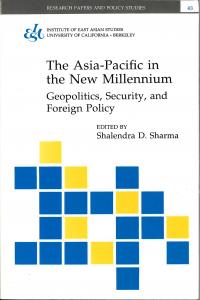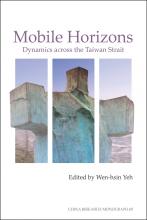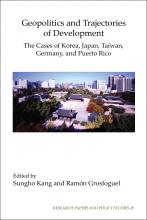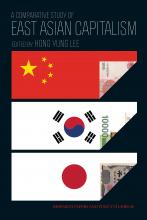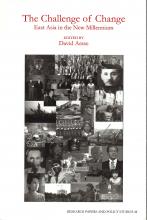The Asia-Pacific in the New Millennium
The Asia-Pacific in the New Millennium
Shalendra D. Sharma, ed.
This volume, drawing on the expertise of a distinguished group of scholars and policy makers, critically examines the dramatic changes taking place in the Asia-Pacific region, their implications for region and global security and stability, and the challenges such changes will present in the new millennium.
As a nonprofit academic press, we need your support to publish our books. Your gift can help us make more of our titles available as e-books. DONATE NOW
Title information
The post-Cold War era provides both opportunities and challenges to the Asia-Pacific. This volume, drawing on the expertise of a distinguished group of scholars and policy makers, critically examines the dramatic changes taking place in the Asia-Pacific region, their implications for region and global security and stability, and the challenges such changes will present in the new millennium. Using a rich array of conceptual and methodological approaches, the contributors provide a nuanced interpretation and analysis of these complex issues.
Contributors:
David Arase is associate professor of politics at Pomona College.
Walter Andersen is chief of the South Asia division in the U.S. State Department's Office of Analysis for the Near East and South Asia.
David Bachman is chair of the China Studies Program, director of the East Asia Center, and associate professor in the Henry M. Jackson School of International Studies at the University of Washington.
Bruce Cumings is professor of East Asian history and political economy at the University of Chicago.
Lowell Dittmer is currently professor of political science at the University of California at Berkeley and editor of Asian Survey.
Rosemary Foot is professor of international relations and the John Swire Fellow in International Relations of East Asia at St. Antony's College, University of Oxford.
Sumit Ganguly is professor of political science at Hunter College and the Graduate School of the City University of New York.
Uldis Kruze is associate professor of history at the University of San Francisco and coordinator of the undergraduate certificate program in Asia Pacific Studies at the center for the Pacific Rim.
Diane K. Mauzy is professor of political science at the University of British Columbia, Canada.
Ni Shixiong is professor of international relations at Fudan University in Shanghai, China.
Leo Rose is lecturer emeritus of political science at the University of California, Berkeley, and former editor of Asian Survey.
Robert A. Scalapino is Robson Research Professor of Government Emeritus and founder and director emeritus of the Institute of East Asian Studies at the University of California, Berkeley.
Shalendra D. Sharma is associate professor of political science and director of the M.A. program in Asia-Pacific studies at the University of San Francisco.
Sheldon Simon is professor of political science at Arizona State University.
Kusuma Snitswongse is chairperson of the advisory board of the Institute of Security and International Studies at Chulalongkorn University in Bangkok, Thailand.
Allen S. Whiting is a Regents Professor of Political Science at the University of Arizona.
Quansheng Zhao is professor and director of the Division on Comparative and Regional Studies at the School of International Service of American University.
Shalendra D. Sharma, ed.
Shalendra D. Sharma is professor in the Department of Politics at the University of San Francisco.
Ph.D. University of Toronto
The Asia-Pacific in the New Millennium (RPPS 43)
Foreword – vii
Barbara K. Bundy
Acknowledgments – viii
Introduction: An Overview of Asia in the New Millennium – 1
Shalendra D. Sharma
PART ONE: Conceptualizing the Asia-Pacific's Future Direction –13
- 1. The Asia-Pacific in the New Millennium – 15
Robert A. Scalapino - PART TWO: Emergent China – 31
- 2. Domestic Sources of Chinese Foreign Policy after Deng – 33
- David Bachman
- 3. Sino-U.S. Relations: A Chinese Perspective – 52
Ni Shixiong - 4. China and the Dynamics of the Korean Peninsula – 83
Quansheng Zhao - 5. Chinese Foreign Policy Entering the Twenty-first Century – 108
Allen S. Whiting - PART THREE: Northeast Asia and the CIS –133
- 6. China-Japan Relations – 135
- Uldis Kruze
- 7. Japan's Post-Cold War Policy toward China: Attempts at a Broader Relationship –149
David Arase - 8. China and Russia Approach the Millennium –165
Lowell Dittmer - 9. Tragedy and Hope on the Korean Peninsula – 192
Bruce Cumings - PART FOUR: India-Regional and Global Challenges –205
- 10. India's Foreign Policy in the Post-Cold War World: Searching for a New Model – 207
- Walter Andersen
- 11. India and China: Forging a New Relationship – 224
Leo E. Rose - 12. Nuclear Proliferation in South Asia: Origins, Consequences, and Prospects – 239
Sumit Ganguly - PART FIVE: Southeast Asia-Searching for Security and Stability – 255
- 13. ASEAN: Challenges of Regional Political and Economic Cooperation – 257
- Diane K. Mauzy
- 14. Security Prospects in Southeast Asia in the New Millennium – 285
Sheldon Simon - 15. The ASEAN Regional Forum and China – 312
Rosemary Foot - 16. Thailand's Foreign Policy in the New Millennium – 333
Kusuma Snitwongse - PART SIX: The Asian Financial Crisis and Beyond – 349
- 17. The Asian Financial Crisis: Its Origins, the IMF, and Future Prospects – 351
Shalendra D. Sharma - Contributors – 393
|
JOURNAL REVIEWS |
|
"The contributors present an overview of a part of Asia encompassing the major areas of conflict as well as successful economic development….Although events have detracted from the timeliness of some parts of some essays, the volume provides an excellent analysis of some key issues that continue to define the region." ~Robert E. Bedeski, University of Victoria, British Columbia, in Pacific Affairs (http://www.jstor.org/stable/3557808) |
|
"While the end of the Cold War and its impact on the global geopolitical structure has increased the strategic importance of the Asia-Pacific region in world politics, the challenges facing the region are enormous and complex. Although there are many studies on these issues, no other single book can claim to have both comprehensive and in-depth coverage. This volume nicely combines breadth and depth through a survey of regional trends and examination of country and sub-regional cases.....One of its major strengths is that it exposes readers to a nuanced analysis of complex Asia-Pacific problems from a rich array of conceptual and methodological approaches." ~Richard W.X. Hu, University of Hong Kong, in Journal of Asian Studies (http://www.jstor.org/stable/2700207) |

